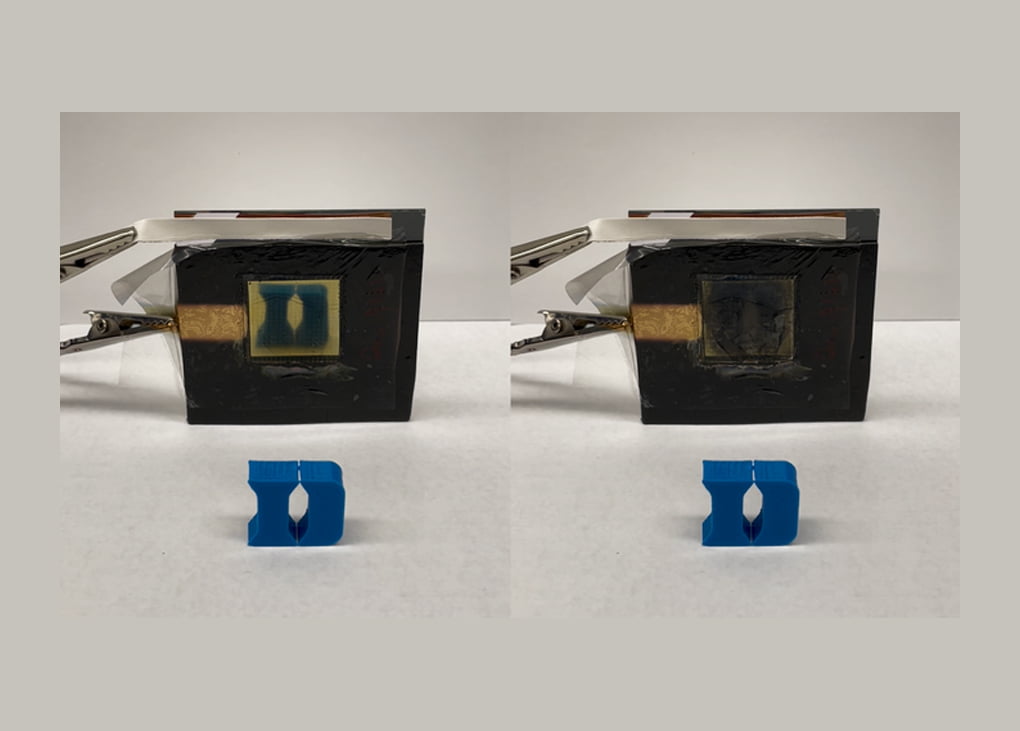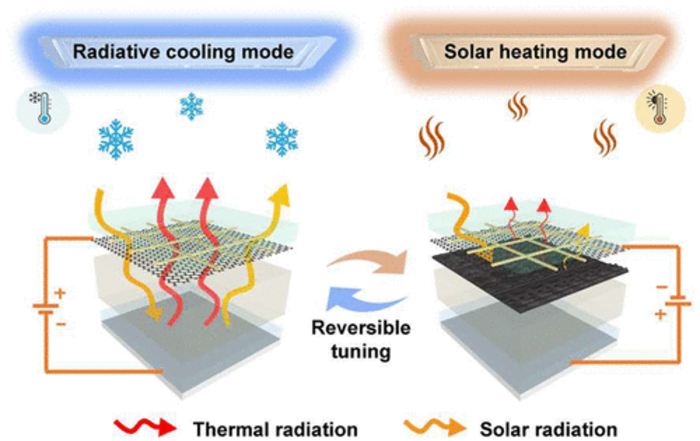Engineers at Duke University in North Carolina, USA have developed a window-like technology that can alternate between absorbing heating and cooling with the flick of a switch.
The material is made from electrochromic technology, a material that can change colour and opacity through conducting electricity.
Assistant professor of mechanical engineering and materials science at Duke, Po-Chun Hsu, says its the very first electrochromic device that can switch between solar heating and radiative cooling.
“Our electrochromic tuning method does not have any moving parts and is continuously tunable,” he says.
According to the research paper published on the topic, Ultra-Wideband Transparent Conductive Electrode for Electrochromic Synergistic Solar and Radiative Heat Management, the material can use the sun as a heat source and deep space as a cold source.
The electronically responsive material needs to be placed between two thin layers of electrodes, so a current can pass between them. Hsu and his graduate student Chenxi Sui created a thin device that can switch between passive heating and cooling modes while interacting with mid-infrared light.
Hsu and Sui had to overcome difficulties finding a material that would be conducive to electricity and be able to absorb and reflect light.
In the end, they engineered their own. They combined gold on top of graphene to act as a conduit for electricity, and used a phenomenon called plasmonics to get the layers to absorb light and heat. Plasmonics places nanoscale metal particles nanometers away from each other to trap specific wavelengths of light based on their size and spacing.
Electricity passing through the two electrodes causes metal nanoparticles to form near the top electrode. Not only does this black out the device, it causes the entire device to absorb and trap both visible light and heat. When the electrical flow is reversed, the nanoparticles dissolve back into the liquid transparent electrolyte. The transition between the two states takes a minute or two to complete.
The technology is still being developed, but Hsu says he can envision this sort of technology forming a sort of envelope or façade to passively heat and cool buildings, greatly reducing the amount of energy that HVAC systems consume.
In fact, it is predicted this type of technology could potentially cut energy usage by nearly 20 per cent in the United States alone.
“Its future direction is very promising,” says Hsu.
Feature image credit: Po-Chun Hsu, Duke University




Leave a Reply